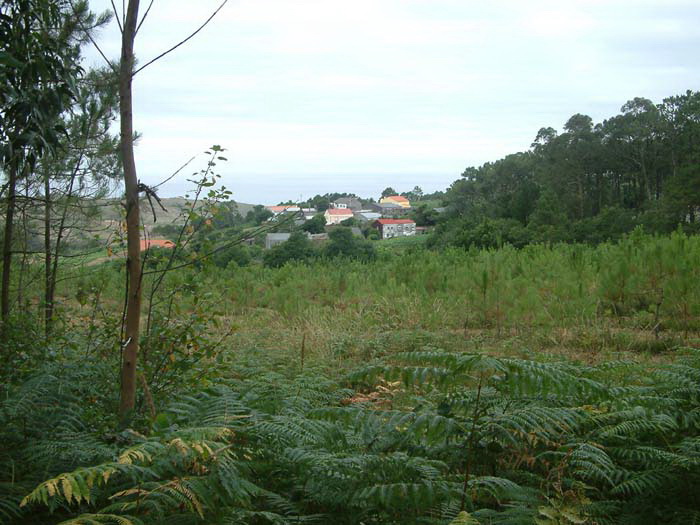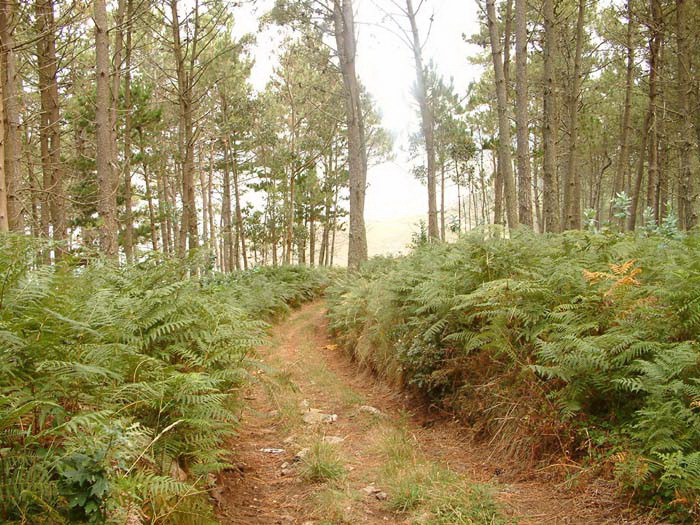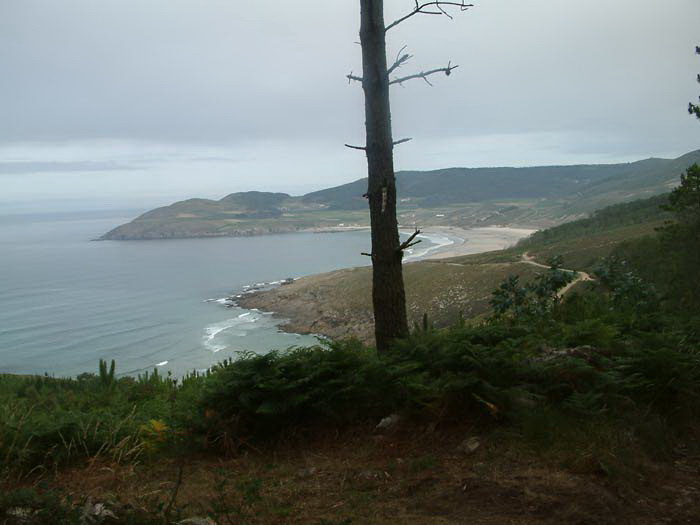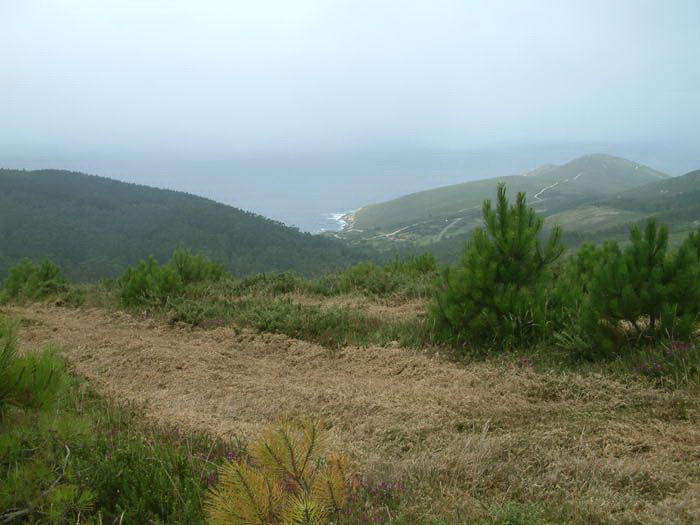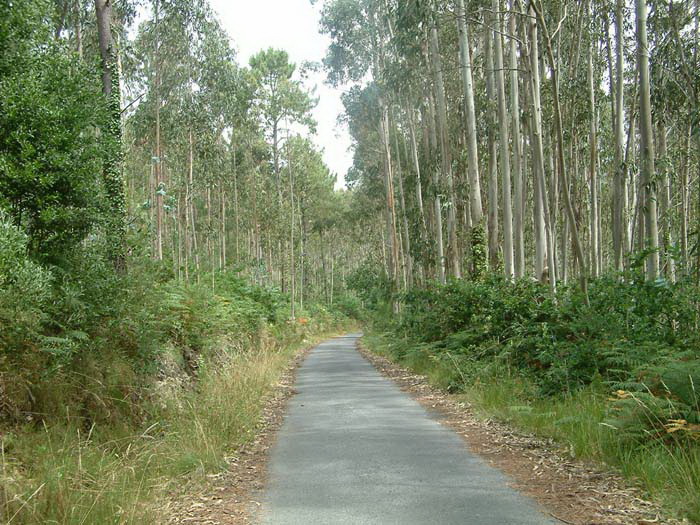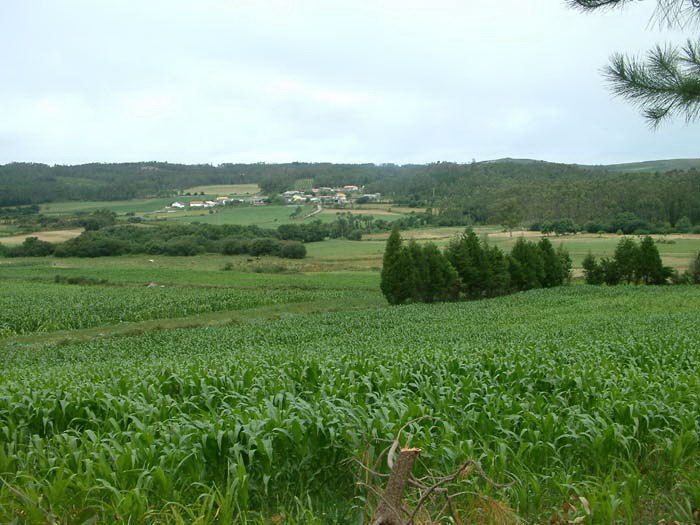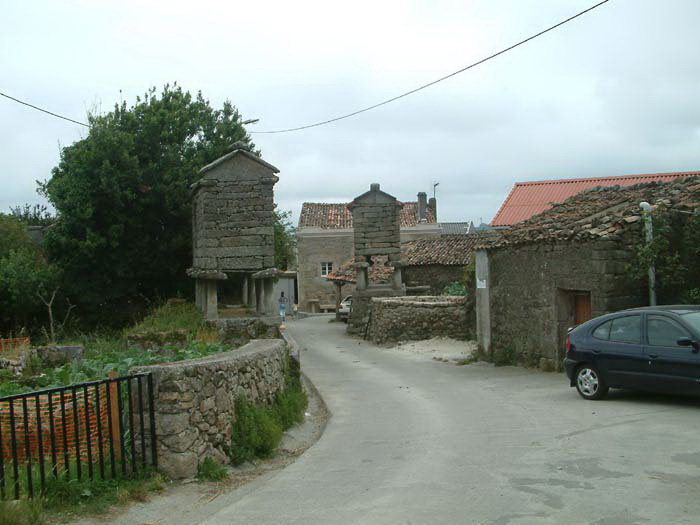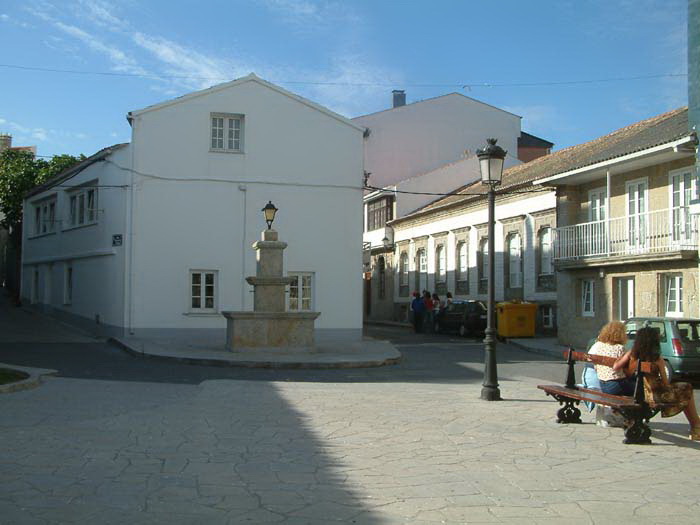Tradition has it that the Virgin Mary, sailing in a boat made of stone, arrived at the sanctuary of A Barca in Muxia to aid St James the Apostle in his preaching of the Gospel all around the northwest of the Iberian Peninsula. This explains the Jacobean connection of this place and why it has been included in the pilgrimage routes from medieval times.
The distance between Fisterra and Muxia is 31 kilometers. The first direct reference is to San Martino de Duio, in the vicinity of which the ruins of the lost city of Dugium were thought to be hidden.
The way passes through villages, farmlands, woodlands, and the sea ever-present from the wild beaches like O Rostro to the tiny estuary, Lia de Lires where the pilgrim can observe an impressive array of birds. Along the route, there are splendid examples of traditional rural architecture intertwined with magnificent churches.
The traveler has to muster up his strength to tackle the final ascent up the hillock of As Aferoas, with its sweeping views before heading to Muxia.
The sanctuary of Nosa Senora da Barca is only a short distance from Muxia. To get there, the pilgrim must take the route squirting Monte Corpino by the way of the Camino da Pel (The way of skin).
You can follow this link to book online a hostel or room in Muxia or to search for accommodation on your way!









